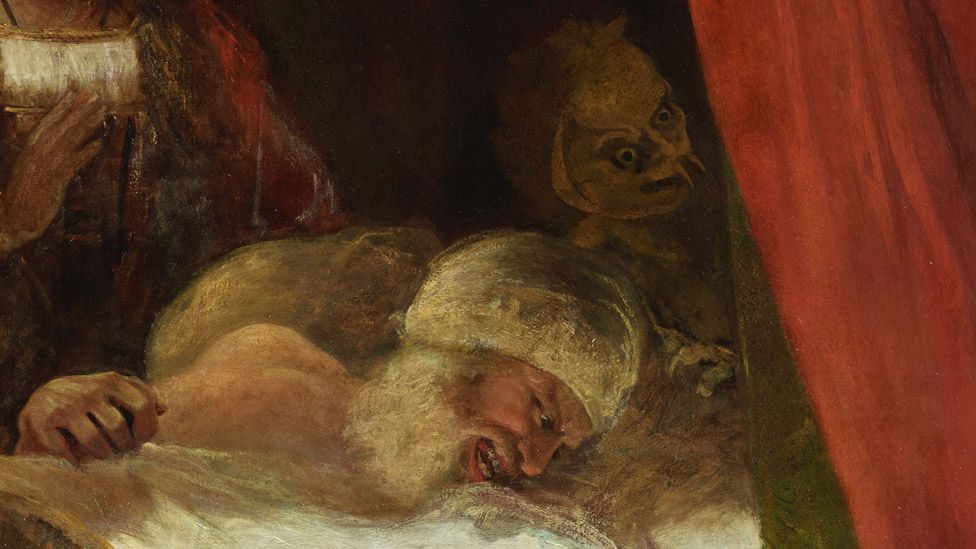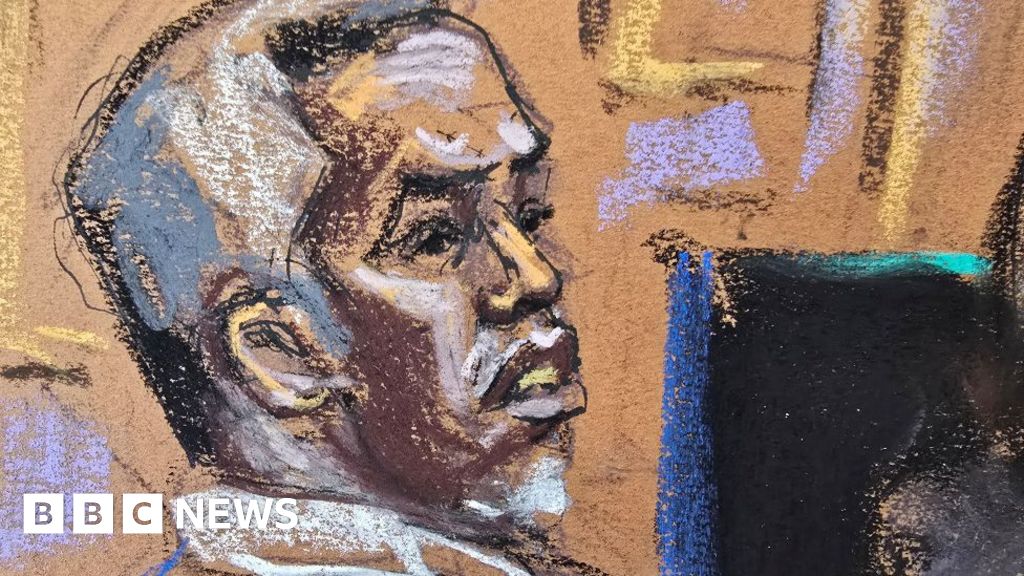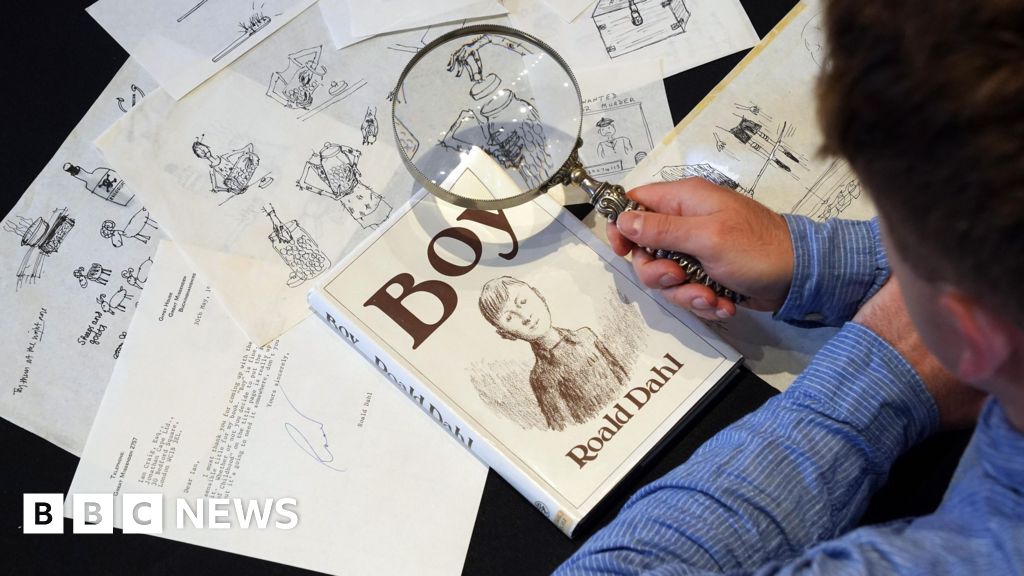ARTICLE AD BOX
 Image source, National Trust
Image source, National Trust
The restoration of Sir Joshua Reynolds' painting has brought a fiend out of the shadows
By Ian Youngs
Entertainment & arts reporter
A devilish figure that disappeared from a celebrated and controversial 18th Century painting for decades has been rediscovered in a recent restoration.
Sir Joshua Reynolds painted a demon lurking in the shadows in his picture The Death of Cardinal Beaufort, based on a Shakespearean death scene.
But "the fiend" eventually disappeared beneath layers of paint and varnish.
Image source, National Trust
Image caption,The fiend's face was no longer visible prior to restoration
The 1789 artwork has now been put back on display at Petworth House in West Sussex, with the demon in full view.
The fanged creature can be seen at the head of the bed, in the shadows, as Cardinal Beaufort lies dying, with King Henry VI and two lords at his bedside.
Image source, National Trust
Image caption,The full painting shows Lords Warwick and Salisbury and King Henry VI at Cardinal Beaufort's bedside
It was based on a scene in Shakespeare's Henry VI, Part II, and depicts the power-hungry and conspiring cardinal in the final throes of death.
In the play, King Henry laments the cardinal - his great uncle's - death, saying: 'O! beat away the busy, meddling fiend that lays siege unto this wretch's soul'.
That "fiend's" inclusion in the picture stirred controversy at the time it was created because some thought Sir Joshua - considered one of the greatest painters of his age - should not have explicitly shown an imaginary creature.
One critic described it as "too ludicrous and puerile to escape censure", while another said it "does no credit to the judgement of the painter".
Monstrous figure
John Chu, the National Trust's senior national curator for pictures and sculpture, explained: "It didn't fit in with some of the artistic rules of the times, to have a poetic figure of speech represented so literally in this monstrous figure.
"When it was first shown at the Shakespeare Gallery in 1789 it generated more controversy than any other work on show.
Critics argued that "while it was considered acceptable in literature to introduce the idea of a demon as something in the mind of a person, to include it visually in a painting gave it too physical a form", said Mr Chu.
Several friends and commentators tried to persuade Sir Joshua not to include it - or, on the painting's completion, to paint it out.
'A mess of misinterpretation'
Over the years, the disputed figure has faded into the shadows, as the artwork was overpainted and given numerous layers of varnish by restorers.
Early conservators appeared to have "misunderstood" the figure, Mr Chu added, and within decades "that area seems to have deteriorated into small islands of paint and become less clear".
"Degradation of successive varnish layers over the years made it even less visible," he added.
Becca Hellen, the National Trust's senior national conservator for paintings, said the area around the fiend was "especially difficult" to restore.
"With the layers added by early restorers, it had become a mess of misinterpretation and multiple layers of paints."
The National Trust marked the demon's reappearance in the painting with a timely announcement on Halloween.

 1 year ago
30
1 year ago
30








 English (US) ·
English (US) ·